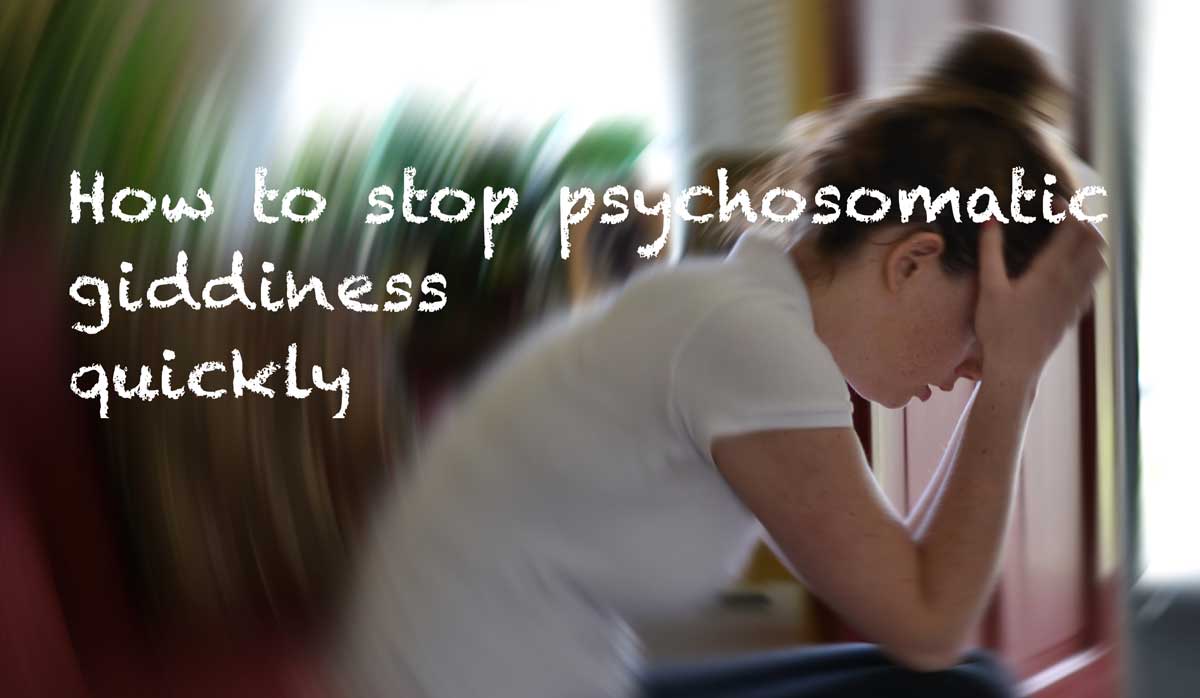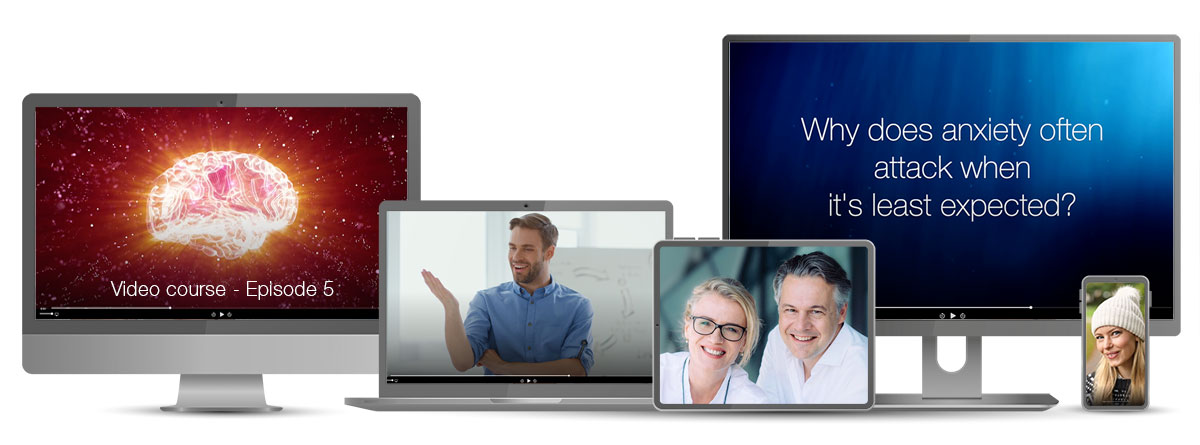
Giddiness – How to Overcome that Feeling with Pattern Interrupters
A few years ago, a lady came to our practice. She told me in a preliminary telephone conversation that she was terrified of falling. As soon as she entered the hallway, I noticed she was leaning against the wall, looking for support. When she entered the treatment room, she grabbed the nearest chair back and held on to it convulsively. When asked about this, she told me she was suffering from giddiness. For years, she would go from one doctor to another without anyone being able to help her with this problem.
While she was still standing, I asked her to describe her vertigo to me in more detail. It was swaying vertigo from left to right as if she were walking on a ship. I asked her to imagine that the dizziness was not from left to right, but back and forth. Her total concentration should be focused for a moment only on how her body sways back and forth. After a few seconds, you could see her move her upper body gradually back and forth. Now I asked her to let go of the back of the chair and walk a few steps. She did, and after a few steps, she stopped in amazement. Then, she turned around, walked a few more steps, and finally looked at me, stunned. “Mr. Bernhardt, how is that possible? My giddiness is gone!” She walked a few steps again, but the dizziness still remained gone. I asked her to take a seat, and I could see that she still could not believe what she had just experienced. So I explained what had happened in her brain during this little concentration exercise.
Staggering – When the Psyche Disturbs the Balance
Psychosomatically induced dizziness, which often occurs, for example, in people with an anxiety disorder, has nothing to do with the organ of equilibrium in the inner ear. This staggering form is triggered solely by the psyche, i.e., by mental processes within our brain. This unpleasant feeling cannot be eliminated by medication, but only on a mental level. If your brain thinks that it has to make you believe that you are swaying to the left and right, then it is entirely sufficient if you mentally break this movement pattern. This is done by intensively imagining an opposite movement, in this case, the swaying from front to back. This pattern interrupter does something quite remarkable in your brain: your grey cells have a problem processing these opposite movements simultaneously. What then happens is what also astonished our patient: The opposing impulses cancel each other out, and the dizziness stops.
Psychosomatic Symptoms – Where Pattern Interrupters can Help
When physical complaints occur for which there is no explanation from a purely medical point of view, one often speaks of psychosomatic symptoms. However, this does not mean that these complaints are only imagined. Whether it is dizziness, unexplainable pain, palpitations, hot flushes, shivering, pressure on the chest, or nausea, these and many other symptoms are real, only that they are not caused by a physical problem but by mental processes.
Experts are sure that many psychosomatic complaints are caused by an anxiety disorder, even if many affected people are unaware of it. However, there is good news for those who fear that they will now undergo lengthy psychotherapeutic treatments to get rid of their psychosomatic symptoms. Because there are helpful pattern interrupters not only for giddiness but also for almost all other psychosomatic complaints.
Get Rid of Psychosomatic Symptoms & Anxiety within a Few Weeks
The lady, who can now enjoy her life again thanks to a simple pattern interrupter, is just one of many patients helped by the Institute for Modern Psychotherapy in Berlin (Germany). Thanks to the latest findings from brain research, there are now suitable pattern interrupters to significantly reduce almost all psychosomatic symptoms. In addition, we have succeeded in developing a method with which anxiety disorders can be overcome entirely in most cases. And this even WITHOUT the painful confrontation with fearful situations, WITHOUT lengthy digging into early childhood memories, and even WITHOUT medication. And because the whole thing is almost as simple as the trick with which you can switch off dizziness, the entire thing is now even available as self-therapy in the form of an online course.

Giddiness – These Are the Different Types
There are different medical terms for giddiness. Depending on what symptoms a patient describes, a distinction is made between:
For all three types of giddiness, if a doctor determines that there are no organic causes for the giddiness but that it only has psychosomatic causes, then there is an excellent chance that it can either be gotten rid of with a suitable pattern interrupter or by successfully treating the underlying anxiety disorder.
Giddiness – The Following Organic Reasons Should be Checked
Giddiness often occurs due to an untreated or even incorrectly treated anxiety disorder. Nevertheless, there may also be organic reasons that you should clarify before you do something about your giddiness with THE ANXIETY CURE. For example, the following organic reasons are possible:
Summary
Thanks to the latest findings from brain research, it is now easier than ever to do something about giddiness. Especially psychosomatically triggered giddiness can be quickly overcome with the help of pattern interrupters. This does not require psychotherapeutic sessions because the appropriate counter-impulses, with which the various forms of dizziness and staggering can be stopped well, can be learned conveniently from home via an online video course.
About the Author
Klaus Bernhardt runs the Institute for Modern Psychotherapy in Berlin (Germany) with his wife, Daniela. He pioneered using brain-friendly methods to treat anxiety disorders, depression, and obsessive-compulsive disorders. Klaus Bernhardt has published 3 books that have also caused an international stir. In Germany, all of his works have bestseller status.